Are nitrates lurking in your favorite foods? Discover the hidden sources and surprising risk factors that will make you think twice about your next meal.
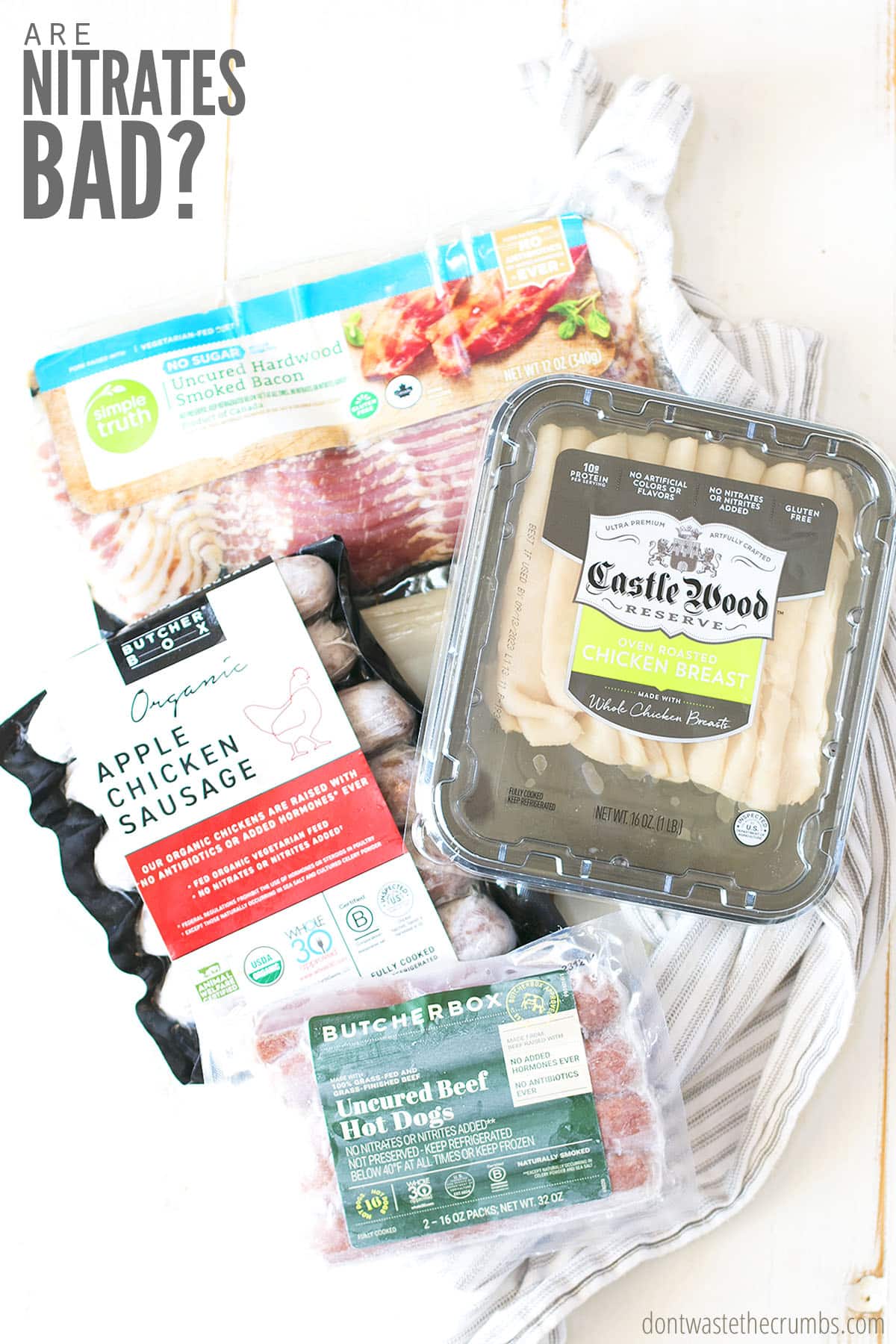
Buying items labeled “free of nitrates and nitrites” seems to be all the rage now. It’s sometimes hard to distinguish between a food fad (remember when being fat-free was the only way to go?) and true guidance for human health.
I did a little bit of research to help ease my mind and found lots of really good information. I’ve summarized it for you here and did my best to slim down the science so that we regular folk can get to the bottom of this hot issue.
WHAT ARE NITRATES?
In reference to food, “nitrate” really means sodium nitrate, but should really refer to sodium nitrite. While these are two completely different chemical compounds, they are often used interchangeably by those outside of the science realm.
- Sodium Nitrate is a type of salt, naturally found in Chile and Peru. It can also be created in a lab.
- Sodium Nitrite is also a type of salt but is not found naturally. It’s created in a lab or as a byproduct of two other chemical reactions (i.e. when sodium nitrate is added to food and reacts with existing chemicals).
Since sodium nitrate is most often added as a preservative and then breaks down into sodium nitrite, research efforts are concentrated on the latter.
The original purpose stems from the early 1900s when each of these salts was used to standardize curing – both in the amount needed to cure and in achieving the desired results. In the original research, sodium nitrite was also found to help prevent botulism.
WHAT IS BOTULISM?
Botulism is a type of poisoning that happens when the microorganism Clostridium botulinum creates the protein botulin. Botulin invades the body where nerve cells meet muscle fibers, preventing signals from passing through, and resulting in paralysis. Heating the food kills the protein and prevents the poisoning from occurring, but consuming cured meat was common in this era as heat sources were not always available.
In addition to preventing the growth of these harmful microorganisms, sodium nitrite was also found to help preserve the color of meat and even prevent the meat from going rancid over longer periods of time.
Imagine a horse and buggy traveling across the country, killing animals as needed for food. Not all the meat could be consumed at one time and refrigeration wasn’t available. Sodium nitrite was used to cure and preserve the meat. The meat stayed red or pink and would be edible without causing sickness for days, possibly weeks.
At the surface level, sodium nitrite seemed to be a miracle preservative. Even today, it is sold as a food additive. However, it is dyed bright pink to prevent consumers from mistaking it for salt.
Is there concern about mistaking sodium nitrite for salt? Given that sodium nitrite is toxic in large quantities, yes. Research indicates that the toxic level of sodium nitrite for a 143lb person is 71 mg/kg… meaning consumption of this amount would result in death.

NITRATES IN FOOD
Sodium nitrate occurs naturally in many of the vegetables we consume. For example, curly kale has been clocked in at 302 mg/kg and green cauliflower at 61 mg/kg. Most vegetables fall somewhere between 1.1 and 57 mg/kg.
Does this mean we can die from consuming large amounts of fresh vegetables? No. The concern for poisoning from nitrates is not a concern in regard to vegetables. In fact, bacteria in our mouths convert nitrates into nitrites. Vegetables are full of vitamins and minerals that inhibit the production of nitrosamines, the carcinogenic chemical that sodium nitrite creates when charred or overcooked.
Charring or overcooking meat that contains sodium nitrate (or nitrite) creates a chemical associated with an increased risk of cancer.
Note: Drinking water also contains naturally occurring nitrates. Most public water system authorities regularly test nitrate levels to ensure amounts are safe.
FOODS HIGH IN NITRATES
All meats that contain nitrates (added for curing or preserving) also contain ascorbic acid, a form of Vitamin C, as required by the USDA. Some manufacturers play it extra safe and add alpha-tocopherol (a form of Vitamin E and an antioxidant). Both of these inhibit the formation of nitrosamines and the levels of this carcinogenic chemical are significantly lower than in the 1970s when the USDA realized that nitrates could be harmful.
So if the nitrates in meat have been negated with added vitamins, then why are manufacturers making “nitrate-free” or “no added nitrates” meat?
Because we as a society have been scared into believing that all nitrates are bad.
But that’s not true. Remember that almost all vegetables contain naturally occurring nitrates – especially green vegetables (spinach, lettuce, celery, etc.) – and we’re told to eat as much of these as we can because of the health benefits they offer. For example, eating vegetables high in nitrates can help lower blood pressure. According to scientific evidence, beetroot juice has high nitrates. Beets help reduce high blood pressure by dilating the blood vessels and circulating more oxygen atoms throughout the body. As a result, your risk for cardiovascular disease is reduced.
As people are conscious of our health and trying to improve our eating, we should be concerned about the amount of nitrates we consume. It is certain that consuming excessive amounts of processed food is bad for our health. Did we not learn this lesson from the documentary “Super Size Me?” Bacon, hot dogs, and lunch meat are indeed processed meats and they must be consumed in moderation.
WHAT AMOUNT OF NITRATES IS CONSIDERED HEALTHY?
The Cancer Prevention Coalition recommends no more than 12 hot dogs in a one-month period for children. While I haven’t studied the level of nitrates in every brand of hot dog, lunch meat, and bacon, we could err on the side of caution and say that children should not consume more than 12 servings of all of the above types of meat in a one-month period.
Surely we know not to feed our kids hot dogs every other day, but when totaling the number of processed meat our children consume in a one-month period, we could easily reach the 12-serving mark. One hot dog here, a turkey sandwich there… bacon on the weekends. So it’s no wonder why families have flocked to products marked “nitrate-free” or “no added nitrates.” It makes us feel safer when we feed our children (and ourselves) processed meat.
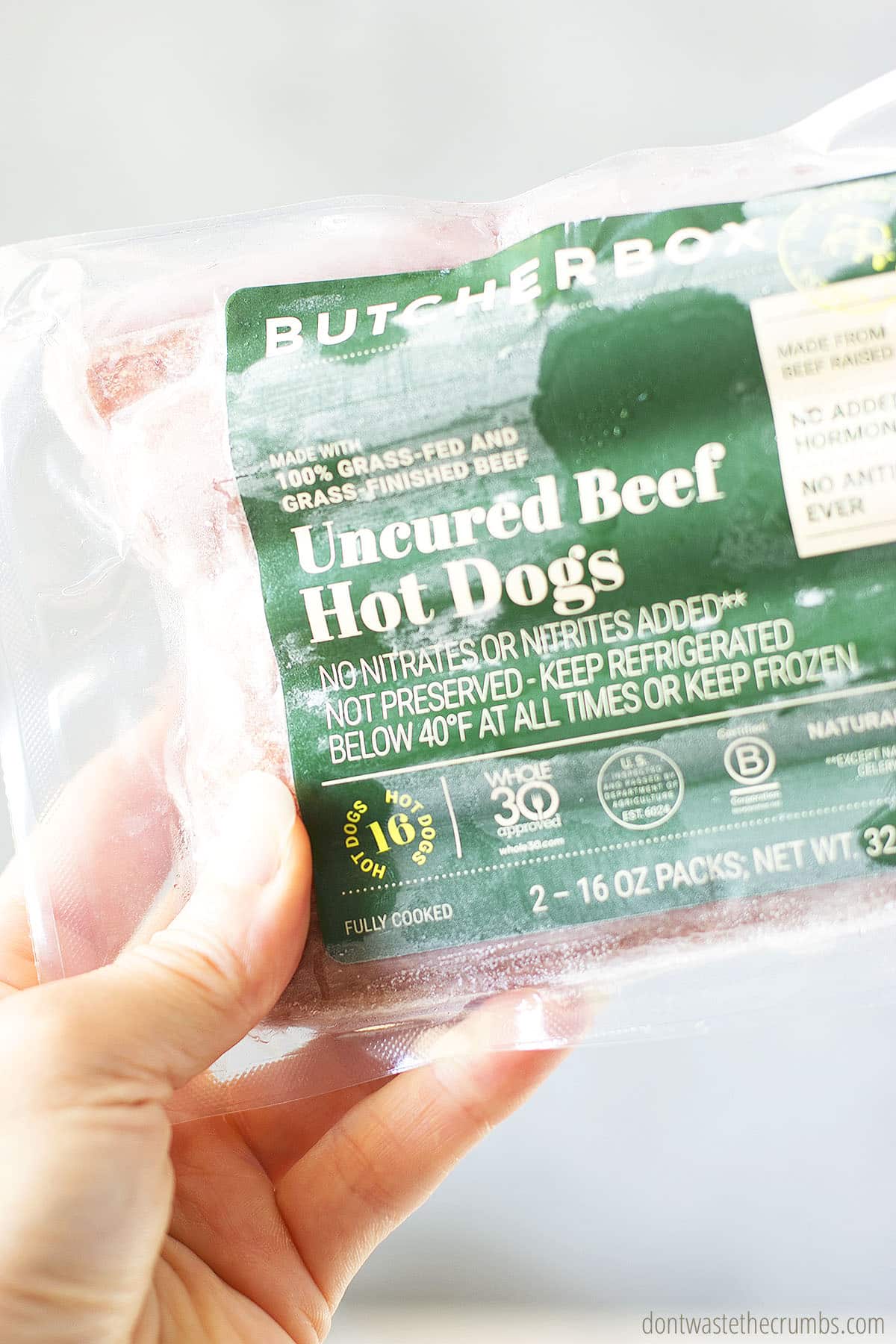
NATURAL NITRATES
But here’s one last food for thought. In order for these types of meat products to survive from production to store shelves and inevitably, to our freezer, there must be some type of preservative.
The most common, natural preservative used to achieve the same effect as sodium nitrate is celery juice or celery powder. Both forms of celery juice are chosen for their significantly high levels of nitrate. And since celery juice is a plant-based ingredient, and not specifically sodium nitrate, manufacturers are allowed to label the products “nitrate-free” or “no added nitrates.”
What does this mean?
It means that while we purchase meats labeled “nitrate-free” or “no added nitrates” and believe the nitrate level is zero, the actual nitrate level may be far from that.
There’s a decent chance that the nitrate levels in the “free” meat are lower than the meat preserved with pure sodium nitrate, but they’re still not zero. And since celery juice doesn’t prevent botulism from forming, there’s an increased risk of children getting sick from these products if they’re not properly prepared.
HOW TO AVOID OVER-CONSUMING NITRATES
Like most healthy eating, consume all processed meats in moderation. Whether that be traditionally cured meats with sodium nitrite, or meats preserved with celery juice – use discretion and moderation. Be conscious of how many servings our household consumes.
Limit purchases so that consumption is limited and choose an alternative if possible (freshly cooked chicken breast sliced for sandwiches instead of processed chicken breast lunch meat). If products with celery juice (any form) are consumed, be sure to cook the product thoroughly.
Simply being conscious of how much we’re consuming is half the battle. Bacon on Saturday, a turkey sandwich on Sunday, and hot dogs on Monday… we could easily surpass moderation if we aren’t paying attention.
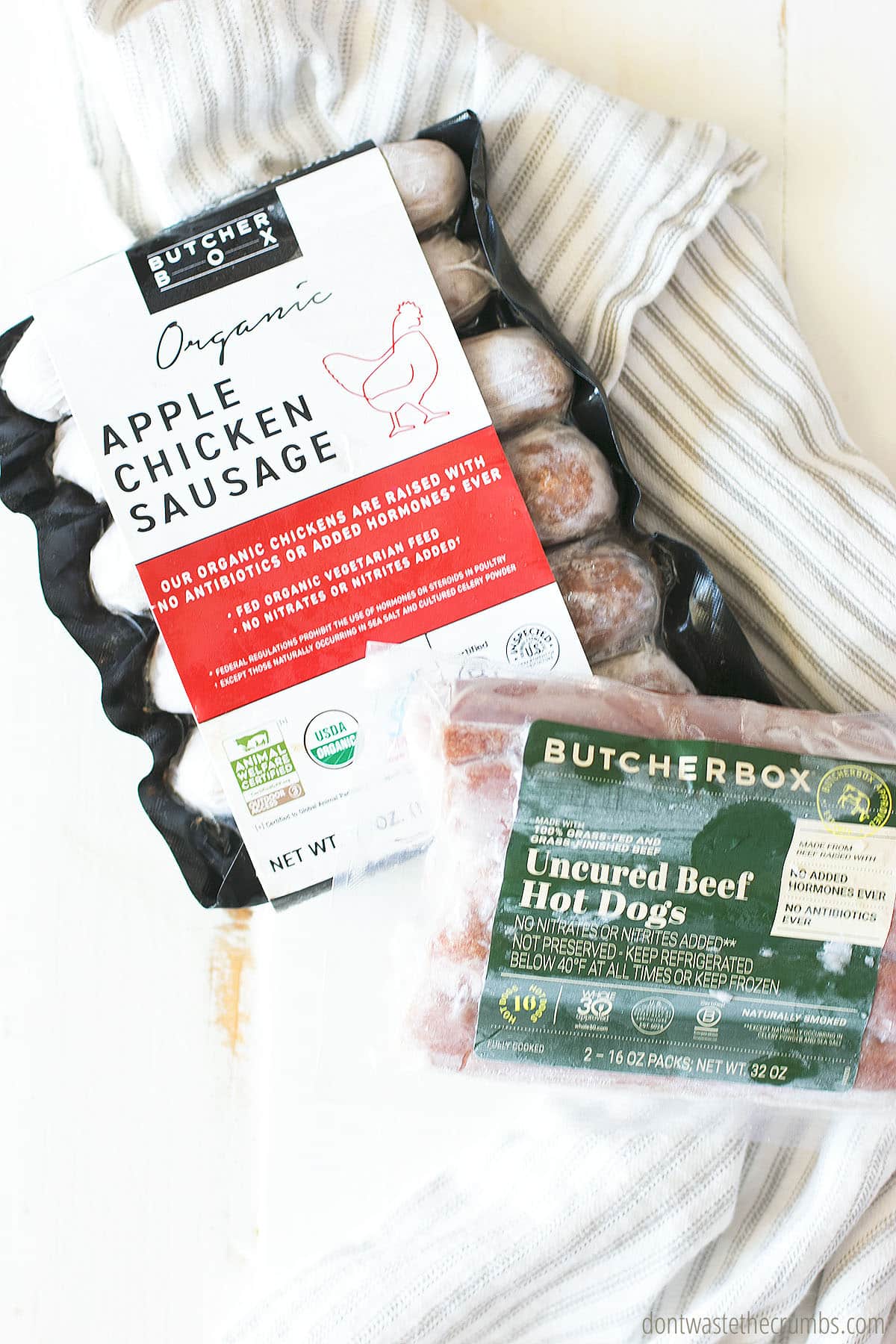
NITRATES: THE FINAL VERDICT
While consuming too many nitrates can be risky, we shouldn’t label all nitrates as villains. Natural nitrates found in vegetables can actually offer some health benefits, like improving blood flow and providing antioxidant protection. On the other hand, synthetic nitrates in processed meats can be concerning. It’s all about finding a balance. So, enjoy your leafy greens, and be mindful of processed meats!

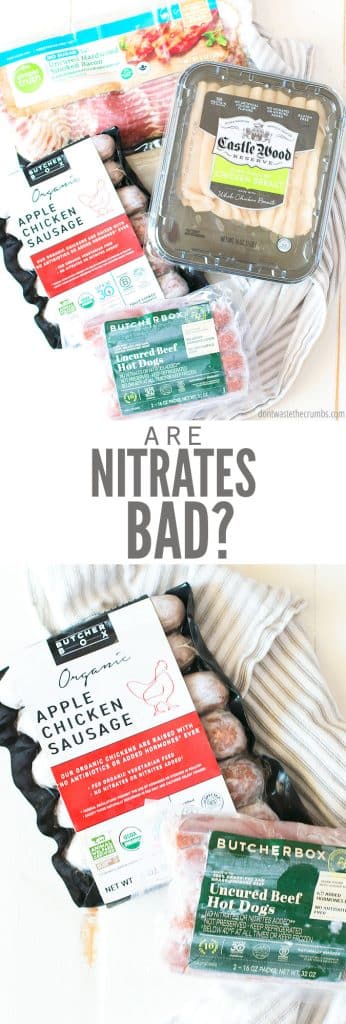
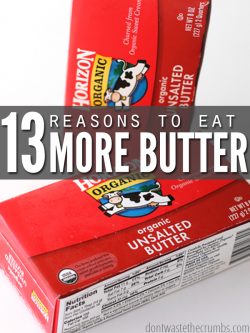
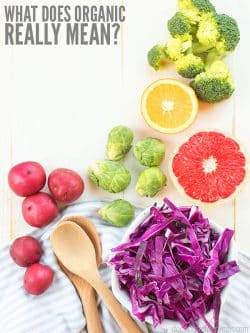


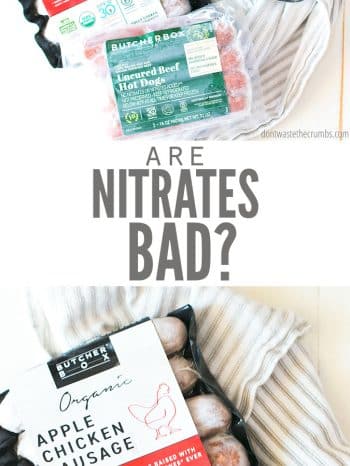
Well, I was fooled on the “uncured” Trader Joe’s turkey bacon – “no nitrites or nitrates except those naturally occurring in celery powder.” Had been having a slice a day, microwaved 35 seconds and cut into salad. Will definitely need to cut that out now.
Hi Glenn! We actually eat the bacon that’s cured with celery salt, since it’s a more natural alternative to nitrites and nitrates, although our consumption is limited to 3-4 pcs each month. As with all food decisions, moderation is key. I don’t think having bacon will kill you, but you’ll have to decide how much is enough. 🙂
Thanks. I suppose I can freeze half a package when I buy it. Otherwise, since I’m cooking for 1, I need to either finish the package (8 slices) quickly or toss some out.
Glenn,
If you buy a dry cured bacon from your butcher it will keep in the fridge for months. Your body cannot differentiate between Sodium Nitrite and Celery Nitrite. The funny thing about most of this celery gimmick bacon is that it is feed lot pigs fed who knows what and raised on hormones and antibiotics. I buy a pasture raised, hormone and antibiotic free, GMO free fed, dry cured bacon made with 3 ingredients: Salt, Sugar, Sodium Nitrite. Also, the salt and the sugar are more harmful to you than the nitrite.
Has anyone thought that maybe it’s actually the dye they use in sodium nitrate that causes the migraines. Only explanation I could think of since all cured products have nitrates whether lab created or from celery/beet juice.
Agreed. It’s the red dye not the salt. Also they don’t make nitrate or nitrite in a lab. It’s a salt that is mined (salt peter) and like all other salts it’s lethal if you eat to much. Just 2 tablespoons of table Salt could kill you.
I am very puzzled about this. Just heard about the nitrates in celery this past Saturday. So do you have raw data on how much is typically in celery processed meats as opposed to those w/ nitrates? I would love to hear more about this.
So do you think that eating any of this stuff is a problem then–celery juice or nitrates? Sounds like it, eh?
Hi Adrienne! When I was researching for this article, I couldn’t find any raw data offering that information. I couldn’t even find measurements of how much celery juice was typically used in comparison to nitrites, although most researchers say more because it’s use isn’t regulated.
In general, I think eating both of these is a problem. However, my suggestion is to steer clear of nitrites whenever possible and eat celery juice within moderation. I don’t think one or two servings a week is a big deal (i.e. pepperoni on a pizza and then a couple slices of bacon another day), but when you add in hot dogs and lunch meat and sausage into the week too, it quickly adds up.
There is a big difference between meats using nitrates/nitrites vs celery juice for me. I get bad migraines from meats that have nitrates and/or nitrites listed in the ingredients, but I do not get headaches when I eat meats that use celery juice instead of the nitrates and/or nitrites. I consider that evidence that the celery juice is safer, probably for everyone not just me. I am not sure why there is a difference and would love to find out. I also get migraines from monosodium glutamate added foods but not from foods that contain natural unprocessed glutamates. Aspertame is another migraine causer for me. So I have become very wary of man-made food additives.
I think I’ve heard this before Shelly, and I believe it’s proof that artificial additives are absolutely no good for our bodies. Thank you for sharing your experience with us! 🙂
My daughter gets headaches from foods containing nitrate/nitrite and sulfate additives. It’s nice to run into another person out there with a similar issue.
She is affected by cheese and grape juice as well– also brown rice and whole wheat. But the white versions are fine. Do you have similar experiences?
I have found that she enjoys eating the Canadian bacon from Costco. They also sell a whole precooked turkey breast there that we slice or dice up for her.
I’d love to hear from anyone who gets headaches from foods with nitrates. I’m wondering what other natural foods affect you.
Hi Kim!
I know this is in reply to Shelly, but I’d like to throw in my 2¢. Have you considered a possible allergy to a form of citric acid that’s derived from mold? Another reader emailed me about it, and it’s often found in cheese. I wouldn’t be surprised if it’s in the juice too as a preservative. Worth looking into!
Thank you! I’ll look into it.
I too am affected by migraines when I eat processed meats with nitrates, but not with celery juice, at least not if I don’t eat to much. However I have chronic migraine to begin with the nitrates in processed meats just make them worse.
Your article is better than most I see on this subject. It’s odd I stumbled on it. But, you are forgetting one important thing. It’s not nitrates or nitrites that cause cancer. It’s nitrosamines. Also, the only study I’ve found that purports it causes cancer is not well done and was consequently rebutted by another study. As we say in medicine, one study is no study.
Nitrosamines are produced when nitrates are heated over 266 (I believe. This is why originally, and perhaps today, the FDA outlawed nitrate use in bacon. Only nitrites were allowed, so bacon was fast cured and smoke, and the nitrites prevented spoilage.
This is one reason why traditional sausage cooking was done by poaching in water around 180. Or even boiling. I boil all my hot dogs, just like most vendors do. So, don’t cook hot dogs or lunch meats past 250-260ish, and you’re good to go.
I believe one of my books by Stanley Marianski touches on this.http://www.amazon.com/Polish-Sausages-Authentic-Recipes-Instructions/dp/0982426720/
But.. again, job well done. Most people who freak out about nitrates and nitrites are not at all educated about it. Another thing though, is that most of the nitrates in vegetables come from fertilizer. Buying organic hedges the amount you’d get from the soil.
Furthermore, this is a simple chemical compound. Whether it is made in a lab, in celery juice, or naturally occurring is moot. To cure meat, you must use it in the correct concentration. It is also a poison and there are toxic levels of which you can consume.
Here’s another good article: http://www.cancer.org/cancer/news/expertvoices/post/2011/03/31/hot-dog!-headlines-can-be-deceiving.aspx
I moderate any high temp food more than I do charcuterie. I also think the saturated fat in some charcuterie dishes are much more of a concern than nitrite or nitrate levels.
Lots of great information in your comment Bob. I appreciate the time you took to share it all, including the links; and thank you for your kind words!
You’re welcome Lauren!
It is my understanding that the nitrate in celery juice does prevent botulism, that’s what they use it for.
That’s not what I found in my original research Shaun. Do you have a source to help me out?
Oh HERE we go!
http://www.westonaprice.org/cardiovascular-disease/how-does-pork-prepared-in-various-ways-affect-the-blood
Great – thanks Liz!
Another thing to consider is that when the nitrate meat is cured properly, the nitrates break down into harmless substances, so properly cured is what’s really important in my opinion. I read this in one of the WAPF publications several months a go. Also, the article said cellery juice is not regulated so producers use much larger amounts. The article was so interesting! It was also about how pork that IS NOT soaked in vinegar or cured actually causes reactions in the blood that indicate harm.
You’re right on the celery juice, so even though it’s natural, it could occur in crazy high amounts and still be legally sold. I’ll have to dig up that article when we get to proteins. Thanks for the tip Liz!
I’ll see if I can find the exact article to make it easier!
You’re such a sweetheart – thanks Liz!
Woops, I was quoting two different articles! The one on pork was in Volume 14 number 1 spring 2013. pg. 46. It was just an observation of a few people and not a real study, but very interesting. Eating sauerkraut with pork sausage seemed to protect against the blood reaction! Now…to find the nitrate article 🙂
With processed meats nitrates are not the only issue as far as healthy eating, its how they are made and what they are made of
Nitrates are definitely not the ONLY issue, but a good starting point. If more people realized the danger of processed foods in general, we wouldn’t have to have as many discussions about sourcing and feeding of the animals. And the ones we did have would be much more productive. 🙂
If people knew (well the ones with a heart) where that bacon came from they wouldn’t be so quick to eat it. Go to you tube and type in something like “pig industry ” you will be beyond shocked. The little piggy did NOT go to market.
Alyssa,
It’s sad that many animals aren’t treated as nicely as they should. If the opportunity to purchase locally from a farmer practicing sustainable methods is available, that should always be the first option. ~Tiffany
Sustainable and nicely are euphemisms for terror and death. My first and only option is not to eat them, then I have no opportunistic alternate methods to worry about. It’s beyond sad.
This is why many of us are choosing to raise our own or seeking out local farmers who raise their animals ethically. It’s not only better for our health and the environment. It also ensures the welfare of the animals.
While you may have refuted that nitrites are safe in moderation concerning cancer, you should read about a blood condition called methmoglobinemia. Sodium Nitrite has been found to cause methemoglobinemia which lead to many conditions from brain fog to seizures and death. You can read about at the US National Library of Medicine at the National Insitute of Health. There link is below:
http://www.ncbi.nlm.nih.gov/pubmedhealth/PMH0001588/
Thanks for leaving the link for additional research George. Opportunities to learn around every corner! ~Tiffany
When I was pregnant with my first child I chose to prohibit nitrates, and I continued after my pregnancy, replacing those products with no-nitrate-added alternatives. I felt better than I ever had, at least gut-wise (didn’t have any effect on the new mama delirium!). A year later my husband decided to make the cut as well. He lost 7 pounds in one week. Now, we didn’t eat a lot of processed meat; he had a couple of sandwiches a week and maybe 1 serving of bacon or sausage on the weekend. We both experienced less bloating, less gas, and just felt better overall. Even if the products we were eating did have natural nitrates, their effect on our digestive systems was staggeringly different.
That’s so amazing that you guys noticed such a different with natural vs. non-natural nitrates alone! Your testimony has me nearly sold on cutting out nitrates altogether (we’ve significantly cut back, but not completely out yet). Now if we could only cure momnesia… 😉
I developed an allergic type (anaphylactic) reaction to nitrates/nitrites several years ago. Carry steroids and epipens with me all of the time. It’s interesting, I do not have the same reaction to the celery type preservatives that I do to the other chemical ones. I can eat the nitrate-free meats that are cured with celery salts. So something different must be going on chemically.
Thanks for the info! We only buy meats from a farm we trust do no nitrites for us at home. I like to do it this way so taut if we are ata restaurant, bday party, visiting the in laws we don’t worry if the kiddos are being over the limit more exposed to carcinogens etc. I just try to keep us eating as healthy as I can at home so when we are invited places we don’t have to be prudes. 🙂
Your philosophy is much like our own – I like it!
Excellent info and can be quite confusing. Just wondering how we can differentiate between salt based nitrates and lab created ones. I’m guessing there are no labels for that. 🙁
I don’t think we can differentiate yet, but prop 37 on the GMO labeling out here would be a step in the right direction.
NaNO3 is sodium nitrate, a salt. It it’s the same wether mined from natural deposits or created in factory. It would not be affected by GMO labeling laws, as it has no genes to be modified and is not an organism.
Thanks Anne!
Thank you for this post! It is very informative! I can leave hot dogs and lunch meat….but bacon? I’d have to say we do bacon more than 12X per month…but not large servings, more like a condiment. Bacon makes EVERYthing better according to our family. ;0)
Oh yes, bacon does making everything better!
Hi there! New follower via the Better Mom Monday Link Up! Look forward to reading more!
Welcome Corso Mama! Glad to have you join us!
Mmmmm. Bacon.
Gonna make yourself hungry!
delicious and hot-dog don’t really belong in the same sentence… (And there’s no contest between hot dog and bacon if I have to do moderation!)
I think I’m the opposite – bacon is good, but I could leave it. A good hot dog though… Mmm… maybe I enjoy them so much because we don’t have them often?
I myself am very sensitive to nitrates. Within 10 minutes of eating cured meats or cold cuts from the deli counter I experience a migraine headache. Happens every time I make the choice to eat something like this. I now choose carefully when shopping for my food.
Gail, it took me many years of tracking foots until my neurologist’s PA told me to not eat any “deli” meats. I had her give me a list. When we found No Nitrate hot dogs, bacon, pizza, I thought I had found the secret. One morning our daily paper explained about the celery oil, celery powder having as much nitrates as before. I am researching here to find out if fresh celery is ok. It seems that it is. I hope your migraines are not as bad as mine. I gave up chocolate many years ago. We read all labels now and even call the manufacturer if not sure.